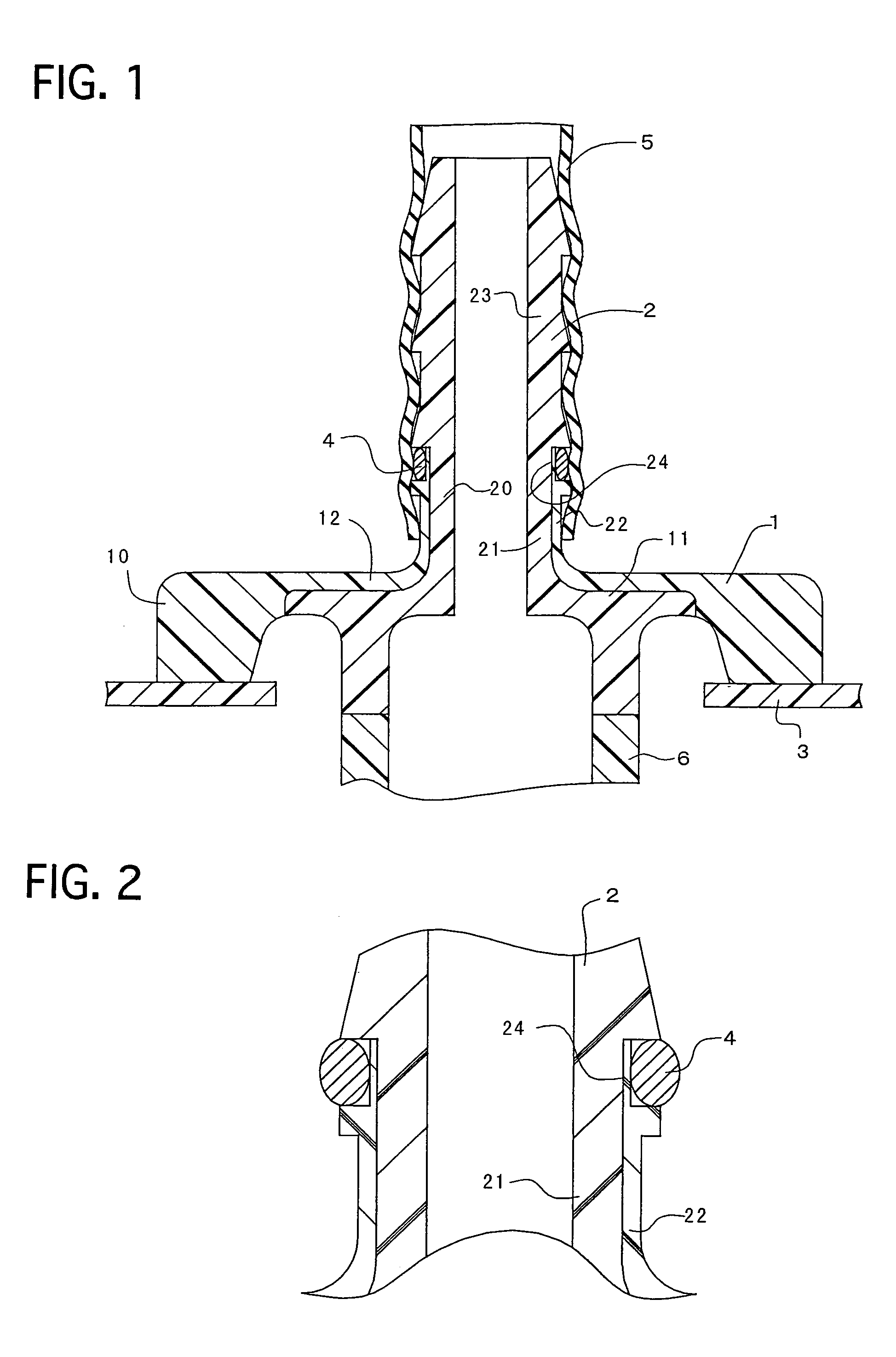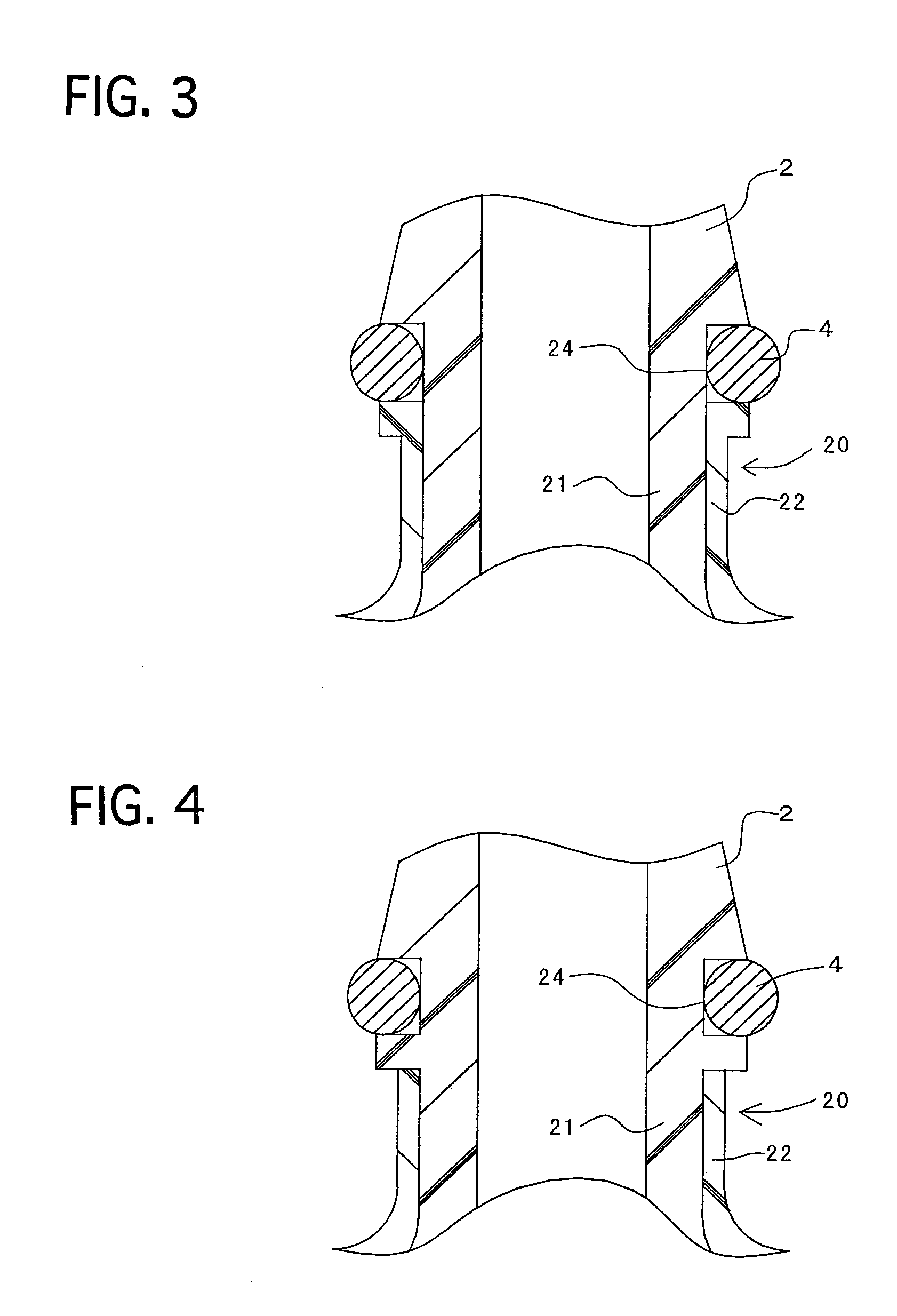Resinous connector
a technology of resinous connectors and connectors, applied in the direction of hose connections, non-disconnectible pipe joints, branching pipes, etc., can solve the problems of insufficient sealing properties, insufficient strength such as shock resistance, and polyamide resins, and achieve the effect of high sealing properties
- Summary
- Abstract
- Description
- Claims
- Application Information
AI Technical Summary
Benefits of technology
Problems solved by technology
Method used
Image
Examples
examples
[0043]The present invention will be hereinafter described in more detail with reference to specific examples. Note that the present invention is applied to a connector for cut-off valves which are fastened to automobile fuel tanks, or a connector for breather tubes, in the present examples.
example no.1
Example No. 1
[0044]FIG. 1 illustrates a resinous connector according to Example No. 1 of the present invention, which is fastened to a fuel tank 3, which is equipped with an O-ring 4, and which is fitted into a hose 5 by press-in fitting, as the cross-sectional view. FIG. 2 illustrates an enlarged cross-sectional view when the resinous connector according to Example No. 1 is equipped with the O-ring 4.
[0045]The resinous connector comprises a flange-shaped base 1, and a fur tree-shaped nipple 2 which projects from the base 1. An outer periphery 10 of the base 1 is formed of an acid-modified polyethylene resin alone. Further, an inner periphery of the base 1 comprises a base inner layer 11 being formed of a polyamide resin, and a base outer layer 12 being formed of the acid-modified polyethylene resin. Furthermore, the base inner layer 11 is formed as a cylinder shape, and is fastened by welding to a functional component part 6 such as the housing of cut-off valves. Moreover, a root 2...
PUM
| Property | Measurement | Unit |
|---|---|---|
| distance | aaaaa | aaaaa |
| length | aaaaa | aaaaa |
| length | aaaaa | aaaaa |
Abstract
Description
Claims
Application Information
 Login to View More
Login to View More - R&D
- Intellectual Property
- Life Sciences
- Materials
- Tech Scout
- Unparalleled Data Quality
- Higher Quality Content
- 60% Fewer Hallucinations
Browse by: Latest US Patents, China's latest patents, Technical Efficacy Thesaurus, Application Domain, Technology Topic, Popular Technical Reports.
© 2025 PatSnap. All rights reserved.Legal|Privacy policy|Modern Slavery Act Transparency Statement|Sitemap|About US| Contact US: help@patsnap.com



